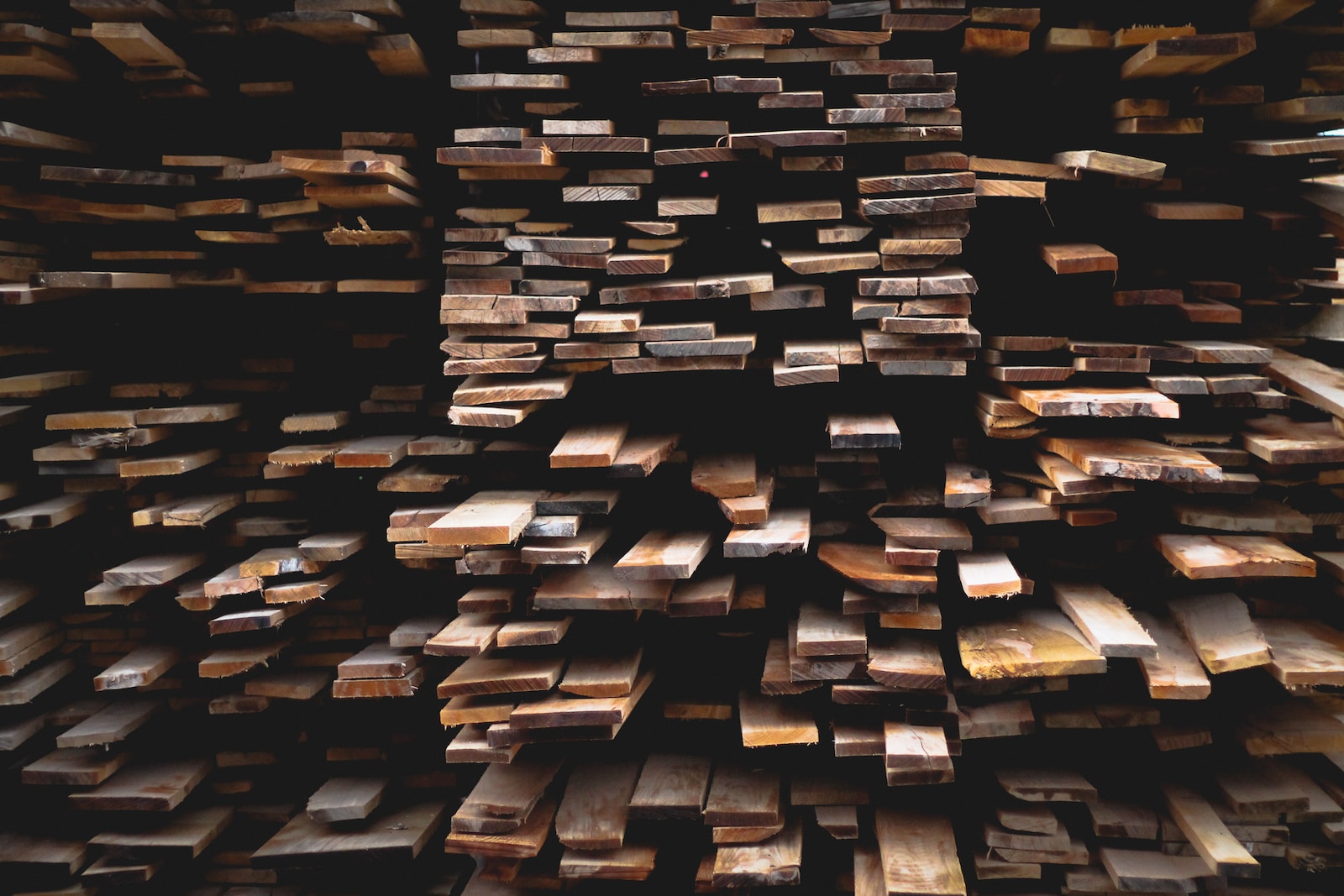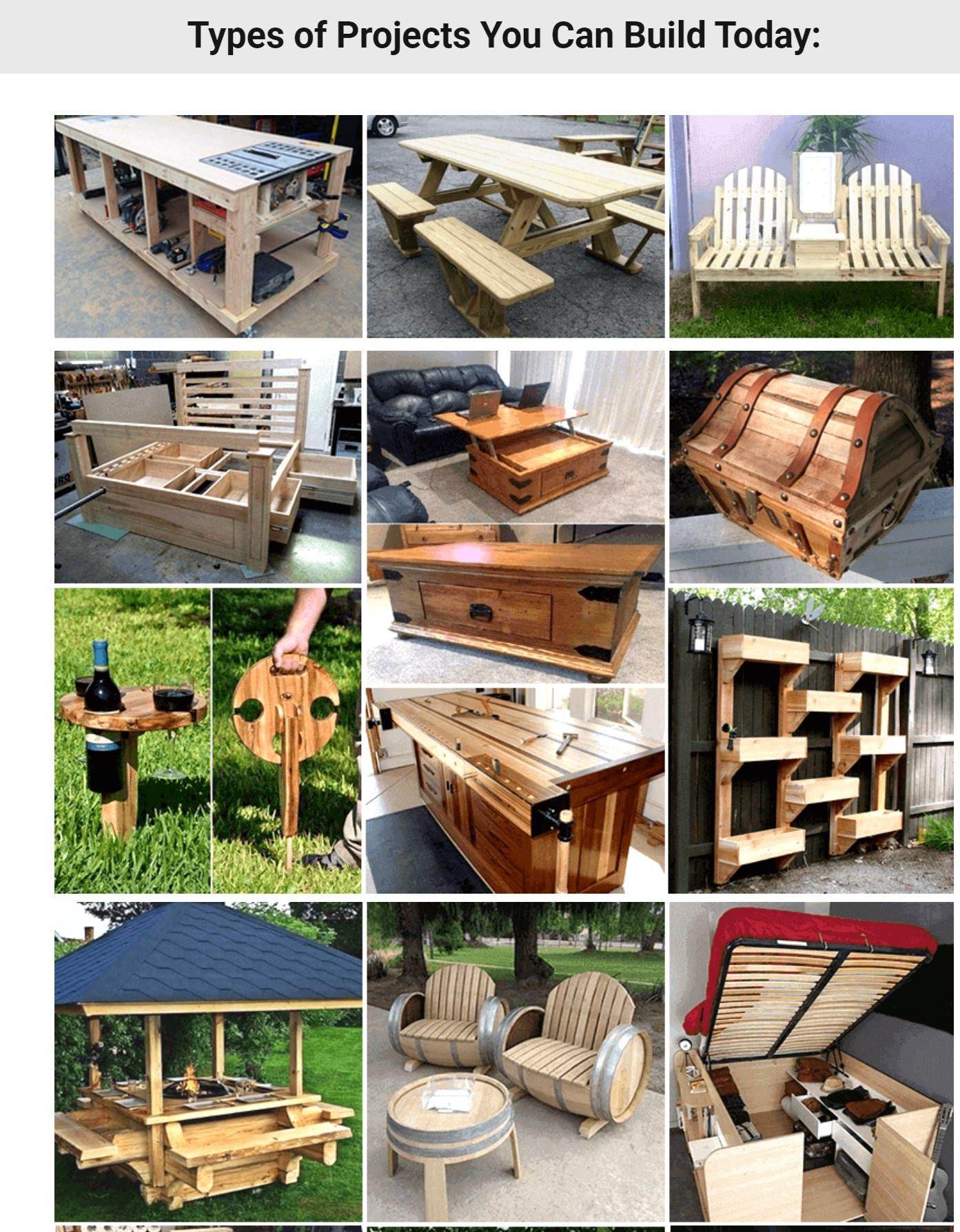Causes of Wood Movement
Wood is a dynamic organic material that expands and contracts in response to moisture changes. Understanding the causes of wood movement and taking precautions are vital for stable furniture and joinery. This article explores the factors that cause wood to change dimensions and shape along with proactive design strategies for minimizing problematic movement.
Wood is hygroscopic meaning it readily gains and loses atmospheric moisture until reaching equilibrium with surrounding relative humidity levels. As it absorbs or sheds internal moisture, the wood fibers swell or shrink. This manifests in several ways:
Contents
- Expansion and Contraction
- Bowing and Warping
- Splitting and Checking
- Grain Direction Impacts
- Preventing Finish Failures
- Q&A
Expansion and Contraction
Wood expands across the grain as moisture is absorbed, while losing moisture causes wood to contract and shrink. This seasonal movement can be significant. A 12” wide oak board will expand almost 1/4” over its width from peak summer to winter moisture changes.
Wood movement per 1% moisture content change:
- Radial – across growth rings: .001″
- Tangential – across grain perpendicular to rings: .002″
- Volumetric – total expansion in all directions: .003″
This must be accounted for when joining boards side-by-side to prevent future separation or cracking as humidity levels cycle. Methods like breadboard ends allow for movement. Select stable kiln dried lumber around 8-10% target moisture content.
Bowing and Warping
In addition to overall dimensional changes, uneven exposure to moisture also causes distortion within the wood called bowing or cupping. This occurs because wood absorbs best on end grain. Edge grain or face grain absorbs far less readily.
If one wood surface gets wetted unequally in different areas, only the end grain will swell, causing the panel to bow or cup. Ensuring wood is sealed evenly is key, along with proper acclimation. Kiln drying also minimizes internal moisture differences that contribute to bowing when the wood later takes on humidity unevenly.
Splitting and Checking
As dimension changes occur, wood may split or crack suddenly to relieve internal stress buildups. This frequently happens across the grain rather than along it. End grain splits and deep checks are also common. Proper drying and sealing avoids excess moisture changes that create stress. Epoxy fillings and reinforcements prevent further cracking at weak points.
Grain Direction Impacts
Wood expands/contracts far less along the grain direction rather than across it. For maximum stability, designing furnishings and joinery to account for wood movement means considering grain orientation:
- Orient wider surfaces for minimal expansion – Vertically run oak flooring expands 50% less across width than if laid horizontally.
- Allow movement at board ends – Use elongated grooves, breadboard ends, L-shaped table aprons etc. to permit end contraction.
- Reinforce across weak tangential plane – Adds cross-braces for shelves, panels, tabletops prone to cupping.
- Avoid large abrupt moisture changes – Gradual, evenly distributed humidity fluctuations cause less dramatic dimensional responses.
Preventing Finish Failures
The dimensional changes wood undergoes impacts how coating finishes adhere over time. Cracking and delaminating can occur when the wood shifts but the more rigid finish layer does not flex as much. Strategies include:
- Use finishes that penetrate wood pores rather than build thick film finishes – oils, varnishes, shellac.
- Ensure finishes continue penetrating into cellular structure rather than merely coating end grain.
- Softer, more elastic finishes handle movement better than hard brittle finishes.
- Allow sufficient finish cure time before exposing to dramatic humidity swings.
- Add finish relaxer additives to improve flexibility.
With proper drying, design adaptations, and suitable finish selection, wood movement does not have to limit durable creations. Referencing resources like the US Forest Products Laboratory Wood Handbook helps incorporate movement into planning.
For more tips on essential woodworking skills see:
Understanding key wood properties like hygroscopic expansion ensures successfully overcoming the challenges of this dynamic material to build heirloom quality furnishings and woodart.
Q&A
Q: Why does wood expand and contract based on humidity levels?
A: Wood is hygroscopic, meaning it readily absorbs and sheds moisture until reaching equilibrium with the surrounding relative humidity. This moisture causes the wood cells to swell or shrink, changing dimensions.
Q: In which direction does wood movement tend to be most pronounced?
A: Wood moves most dramatically across the grain rather than along it. This is referred to as tangential movement and can be 2-3 times more than radial movement across the grain.
Q: What causes bowing, cupping, and warping defects in wood?
A: Uneven absorption of moisture across a wood panel results in uneven dimensional changes that manifest as distortion like bowing, cupping, or twisting. Proper acclimation and finish sealing minimizes this.
Q: When is wood most prone to splitting and cracking?
A: Large moisture fluctuations that cause the wood cells to swell and contract rapidly can create internal stresses that result in splitting, particularly at weak areas across the grain.
Q: How should wood grain orientation influence furniture design?
A: Orienting the widest surfaces with the grain minimizes width expansion changes. Allowing wood movement at ends and reinforcing weak grain directions improves stability.
Q: Why can finishes crack or fail if wood movement is not considered?
A: Wood dimensional changes can delaminate more rigid finish layers that do not flex. Using penetrating finishes and proper curing helps create finishes flexible enough to handle movement.
Q: What moisture content is ideal for wood used in furniture making?
A: Kiln dried lumber should be acclimated to 8-10% moisture content before use. This provides stability while retaining enough moisture to keep wood from being too brittle and susceptible to cracking.
Q: How much can a 10 inch wide oak board expand and contract?
A: Oak can change roughly 1% across the grain per 4% moisture content shift. A 10 inch wide board equates to 1/4 inch total width change between fully wet and oven dry states.
Q: Should I avoid using green wood that hasn’t been kiln dried?
A: Yes, minimizing wood movement relies on using lumber dried close to ideal equilibrium moisture range. Green wood will shrink unpredictably as it dries causing defective projects.
Q: What reference provides extensive data on the movement of various wood species?
A: The US Forest Products Laboratory Wood Handbook has comprehensive expansion/contraction values, mechanical properties, and data to properly engineer wood projects. It is an essential reference.




